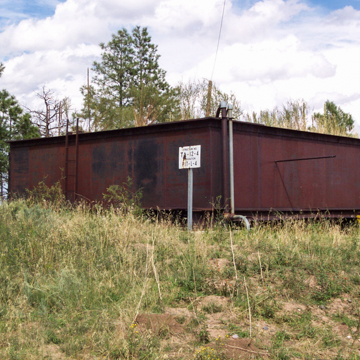You are here
L-Site
L-Site in Technical Area 12 (now Technical Area 67) was used by the Terminal Observation Group to study the “terminal” or physical end results of test explosions. Except for the Hexagonal Firing Pit (TA-12-4), the original complex of structures built in 1945 was abandoned in 1953 and then demolished in 1960. Twelve feet deep and eight feet on a side, the firing pit is set within a manmade earth mound and constructed with heavy timbers that are lined with three-quarter-inch steel plates and capped with a steel lid.
The structure is eligible but not yet included in the Manhattan Project National Historical Park.
References
Los Alamos National Laboratory. The History and Legacy of the Manhattan Project at Los Alamos National Laboratory. Los Alamos: Los Alamos National Laboratory, 2015.
McGehee, Ellen, Sheila McCarthy, Ken Towery, John Ronquillo, Kari Garcia, and John Isaacson. Sentinels of the Atomic Dawn: A Multiple-Property Evaluation of the Remaining Manhattan Project Properties at Los Alamos (1942–1946). Historic Building Survey Report No. 215. Los Alamos, NM: Los Alamos National Laboratory, 2003.
National Park Service. Manhattan Project Sites. Special Resource Study/Environmental Assessment. Washington, D.C.: Department of the Interior, 2010.
Writing Credits
If SAH Archipedia has been useful to you, please consider supporting it.
SAH Archipedia tells the story of the United States through its buildings, landscapes, and cities. This freely available resource empowers the public with authoritative knowledge that deepens their understanding and appreciation of the built environment. But the Society of Architectural Historians, which created SAH Archipedia with University of Virginia Press, needs your support to maintain the high-caliber research, writing, photography, cartography, editing, design, and programming that make SAH Archipedia a trusted online resource available to all who value the history of place, heritage tourism, and learning.














